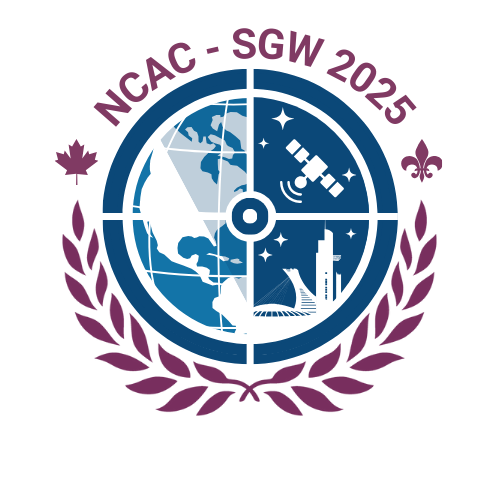WG 1 – Central America Earth Observation Applications
Description:
The development of industry and research in the region has been influenced by the insertion of new technologies, especially satellite technologies. Earth observation has become a key factor for the study of productive and agricultural processes, as well as the analysis of population growth, forest coverage, floods and other natural and manmade fenomena on earth; this has been especially of great importance for the development of emerging countries. The analysis of all the information generated by satellites, both from space agencies and private companies, has become the center of research to generate predictive models that help on decision-making and policy creation. This working group seeks to discuss the common problems that exist in the region; how current technologies and space resources can be used for the analysis of these problematics, and which new projects are being developed in the region in relation to earth observation and remote sensing.
Key Questions:
- Which are common problems and/or challenges that exist in the region? How would the application of earth observation technologies help solving these problems?
- What open or paid resources (satellite images, GNSS satellites information, etc …) are currently available globally that are accessible and usable for the Central American region?
- Which aerospace projects are being developed in the region related to the earth observation?
- What regional institutions currently use or could use information from Earth Observation to strengthen decision-making in the region?
WG 2 – Central American Space Exploration
Description:
It is common to think or hear that space exploration is an exclusive endeavor for the main space agencies or the “first world” countries, due to the large amount of resources and the very high experience and complexity that are needed to successfully accomplish space missions. However, in recent years, we have found that space technologies are getting cheaper and becoming more accessible to regions like Central America (space for all). This working group seeks to find conclusions and proposals to overcome this myth. Likewise, it seeks to understand how the Central American region can be part of that chain of research in space exploration. Lastly, it also will assess current capacities to understand what medium-term projects can be worked on.
Key Questions:
- What kind of needs exist in the region in terms of space exploration? What is or should be the role of Central America in space exploration worldwide?
- Is there some kind of spin-off space technology that can be exploited for the development of exploration in the region?
- Can we locate a region or area, which would be ideal for the development of analog space exploration missions? What kind of projects could be carried out there?
- Identify success stories in the region, key professionals that can guide in a better way the inclusion of students and young professionals in space exploration projects.
- How could other careers that are not engineering-based such as medicine, architecture, geology, astronomy, etc … can contribute to space exploration in the region?
WG 3 – Space Entrepreneurship in the region
Description:
Currently, space industry is living a transformation from governamental space agencies research to a more commercial and private development. Launch services, satellite parts manufacturing, earth observation services and space tourism are just some examples of this third era of space development (commercial). Private initiatives have flourished towards a new age of space exploration, a philosophy known as NewSpace. This trend has been allowed by the development of the markets, cheaper technology, new regulations, appearance of new applications for a broader audience, and new opportunities for commercial exploitation of space resources. The Central America region could benefit from the development of a space economy ecosystem. The region must start soon to be part of this growing economy in order to seek an independency and job creation for new opportunities. The knowledge of the technical developments along with management skills become essential to generate space-technology-based companies. This working group will focus on identifying the actors needed in the generation of these companies as well as their current relationships (e.g. government, private sector, academia, society, etc…). In addition, participants will need to propose the steps to interconnect these actors (or institutions) by analyzing benefits, contributions, operative costs and human resources for each part.
Key Questions:
- What is necessary to create a NewSpace ecosystem in the CA region?
- What kind of partnerships are needed in order to develop or support space technology-based companies? Do they exist already? How could they be created?
- What benefits and challenges do we anticipate in these partnerships?
- How could SGAC/students and young professionals contribute to this topic?
- Do we have successful aerospace related local companies in the region?
WG 4 – Central American Space Policy: Why and how?
Description:
Diverse actors have developed the space technology and space industry in Central America. Nonetheless, is necessary to step up the institutional framework and generate public policies to overcome the challenges in terms of knowledge access and use, based on participation, transparency, and decentralization. A policy is required to create a connection between corporate conglomerates and interinstitutional public-private networks. The lack of institutionality represents an opportunity for cooperation and regional coordination in space activities in each country of Central America. This working group will discuss the topics stated above, as well it will identify how students and young professionals can be part of this initiative. For this purpose, the delegates should take into account current examples of international cooperation as well as the human resources required for such endeavor.
Key Questions:
- What are the current trends/policies in terms of space science for each central american country? Is it possible to standardize the region interests, objectives, and policies in space science and technology?
- What benefits would the central american countries receive from the Space Policy?
- What are the challenges for the development of a Central American Space Policy and what would be the recommendations to address those challenges?
- What mechanisms of cooperation should be developed, and how could this affect or benefit our region?
WG 5 – Nano and Micro Satellites in the Region
Description:
The electronics miniaturization and cost reduction have been the trigger of a new generation of small satellites, amongst them the ones known as CubeSat. Although small, this kind of satellites can carry a variety of sensors such as multispectral and hyperspectral cameras, or even spectrometers that can acquire important and useful information while they are in orbit around the Earth. Its general low-cost implementation makes it interesting for researchers, governments, and companies who want to provide services such as internet, land monitoring among others. Diverse institutions in Central America, have been developing small satellite technology as independent initiatives, gathering relevant experience for the implementation of small satellite-based missions which could benefit the region. This working group will focus on identifying possible partnerships, the steps to generate collaborative programs in this area, and the current state of affairs regarding technological capabilities. This working group will try to serve as a discussion and idea-generation platform for solving some problems of the region that could be aided by the use of space assets.
Key Questions:
- How can the current state of the art regarding manufacturing and operation of satellites in the Central American countries be leveraged?
- How can institutions from central america collaborate to implement a regional community on small satellite applications?
- What could be the most relevant applications of small satellite missions for the Central American societies?
- What are examples of successful missions in the region, and what could we learn from them?
WG 6 – Small Rockets in Central America
Description:
In the Central American region, there already are initiatives for the development of small-scale rocketry. Students and young professionals have been certified internationally in amateur rocketry for the last few years, and they are already qualified to develop rockets that can reach up to an average of 2 km in height. In recent years, at the commercial level, many private companies have been developing their own launch systems at lessened costs; this has allowed space to become more accessible to everyone. Taking into consideration the advantages of the development of small rockets and their reduction in size, this working group’s objective is to explore and promote the development of these new rocketry technologies in Central America. For instance, this new type of technology could allow investigators to develop a variety of launch systems for different payload sizes in the region. Such a type of project could be very useful to launch small satellites or cansat missions.
The development of rocket manufacturing systems requires the creation of many network links with partners in this industry: a partner who can provide their support, experience, and knowledge in this area.
For the development of rockets, it’s a requirement to have geographical regions that comply with a series of characteristics; the Central American region has some interesting characteristics worth studying for the future implementation of such launching facilities (spaceports), as well as for the manufacturing, and assembly of rockets.
Key Questions:
- Identify potential partners for collaboration in the construction of rocketry outside the Central American region.
- Evaluate the social, economic and scientific benefits of the development of a spaceport in the Central American region.
- Identify regions of interest in Central America, to be used as rocket launching ports. What could be potential roadblocks for this project?
- Identify other possibilities for growth in rocketry: different alternatives that are also related to the subject (for example, parachutes, telemetry, construction of our own rockets, chemical propulsion, electric propulsion, etc.).


